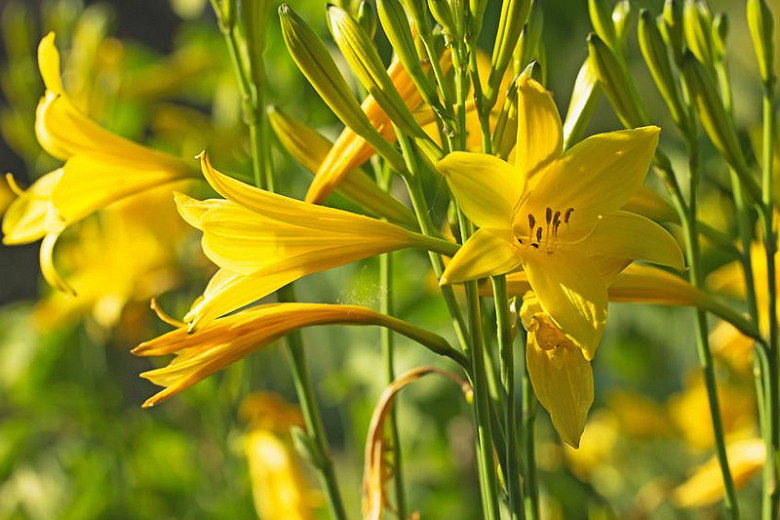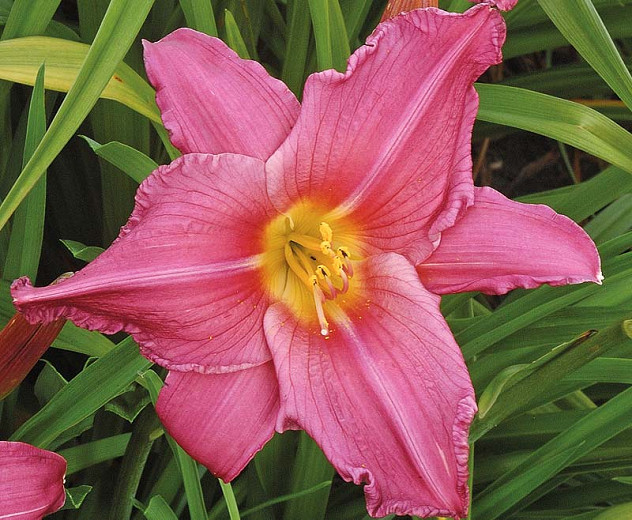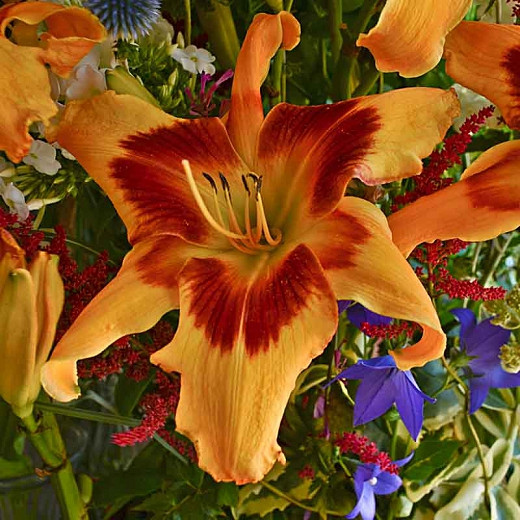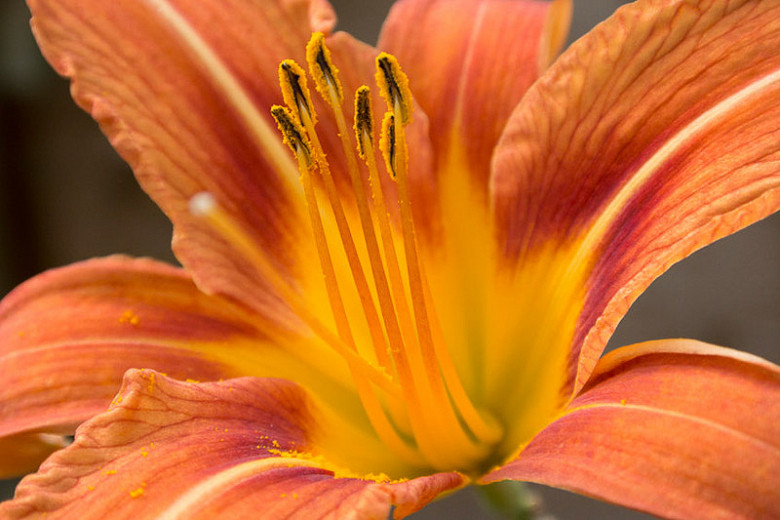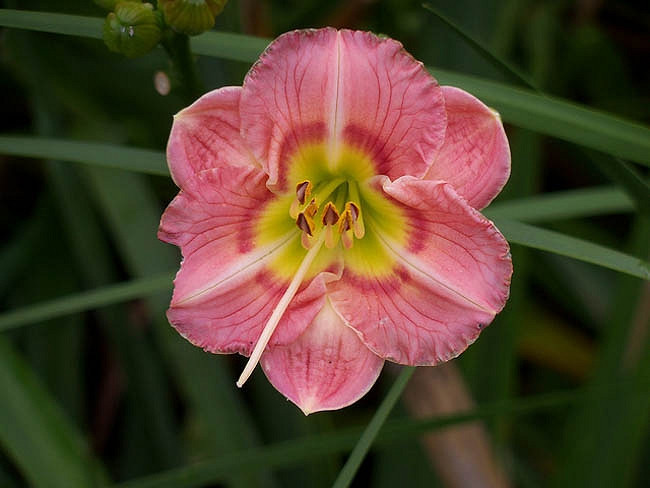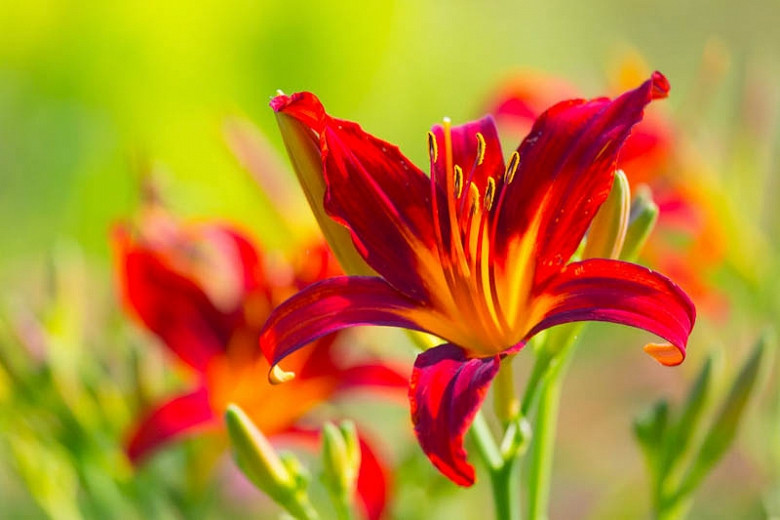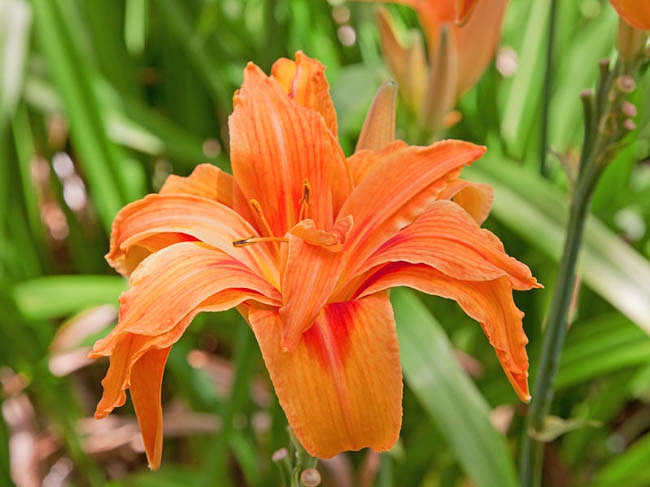Hemerocallis lilioasphodelus (Lemon Lily)
Hemerocallis lilioasphodelus (Lemon Lily) is a remarkable and stunning addition to the garden, valued for its early bloom period (late spring to early summer) and very fragrant flowers. Its small, trumpet-shaped, lemon yellow flowers, 4 in. wide (10 cm), rise from a clump of arching, strap-shaped, green leaves.
Hemerocallis lilioasphodelus (Lemon Lily) is a remarkable and stunning addition to the garden, valued for its early bloom period (late spring to early summer) and very fragrant flowers. Its small, trumpet-shaped, lemon yellow flowers, 4 in. wide (10 cm), rise from a clump of arching, strap-shaped, green leaves. Each flower typically lasts no more than 24 hours, opening up in the early evening and closing early the following morning, possibly replaced by another one on the same scape (flower stalk) the next evening. The semi-evergreen foliage is also a lovely asset as it provides texture and color when the flowers are not in bloom. A great naturalizer, this Daylily multiplies happily!
- This clump-forming perennial will slowly spread to form colonies. It grows up to 30 in. tall (75 cm) and spreads slowly via rhizomes to 24-36 in. (60-90 cm).
- Easy to grow, this Daylily is an ideal choice for shrub borders or perennial beds, as ground covers on slopes or in containers near the patio.
- Thrives in full sun to part sun in average, moist, but well-drained soils. While it performs well in a wide range of soils, fertile loam is preferred. Tolerates heat and summer humidity, but thorough watering is required to ensure its foliage remains attractive.
- Daylilies attract butterflies and hummingbirds but are toxic to cats. Rabbits tend to avoid daylilies.
- No serious pest or disease issues. Keep an eye out for mites, aphids, thrips, or daylily rust.
- The best time to plant Daylilies is in early fall or early spring.
- After flowering, remove spent blooms and seedpods to improve the appearance and encourage rebloom. When all the flowers on a scape are finished, cut off the scape close to ground level. Remove dead foliage from daylilies as they die back in the fall.
- Hemerocallis lilioasphodelus is found across China, in Europe in N.E. Italy, and Slovenia and is one of the first daylilies used for breeding new daylily cultivars.
Requirements
| Hardiness | 3 – 10 |
|---|---|
| Heat Zones | 2 – 11 |
| Climate Zones | 1, 2, 3, 4, 5, 6, 7, 8, 9, 10, 11, 12, 13, 14, 15, 16, 17, 18, 19, 20, 21, 22, 23, 24, H1, H2 |
| Plant Type | Perennials |
| Plant Family | Hemerocallis – Daylilies |
| Exposure | Full Sun, Partial Sun |
| Season of Interest | Spring (Late)Summer (Early) |
| Height | 2' – 3' (60cm – 90cm) |
| Spread | 2' – 3' (60cm – 90cm) |
| Spacing | 24″ – 36″ (60cm – 90cm) |
| Water Needs | Average |
| Maintenance | Low |
| Soil Type | Chalk, Clay, Loam |
| Soil pH | Acid, Alkaline, Neutral |
| Soil Drainage | Moist but Well-Drained, Well-Drained |
| Characteristics | Cut Flowers, Fragrant, Showy, Semi-Evergreen |
| Tolerance | Drought, Rabbit |
| Attracts | Butterflies, Hummingbirds |
| Garden Uses | Beds and Borders, Ground Covers, Patio and Containers |
| Garden Styles | Coastal Garden, Informal and Cottage, Prairie and Meadow |
